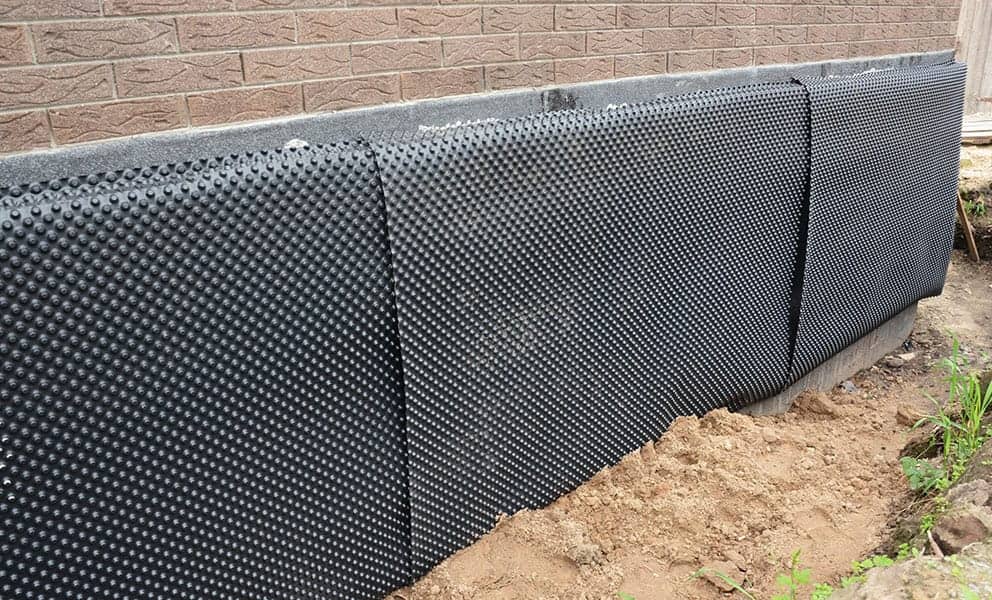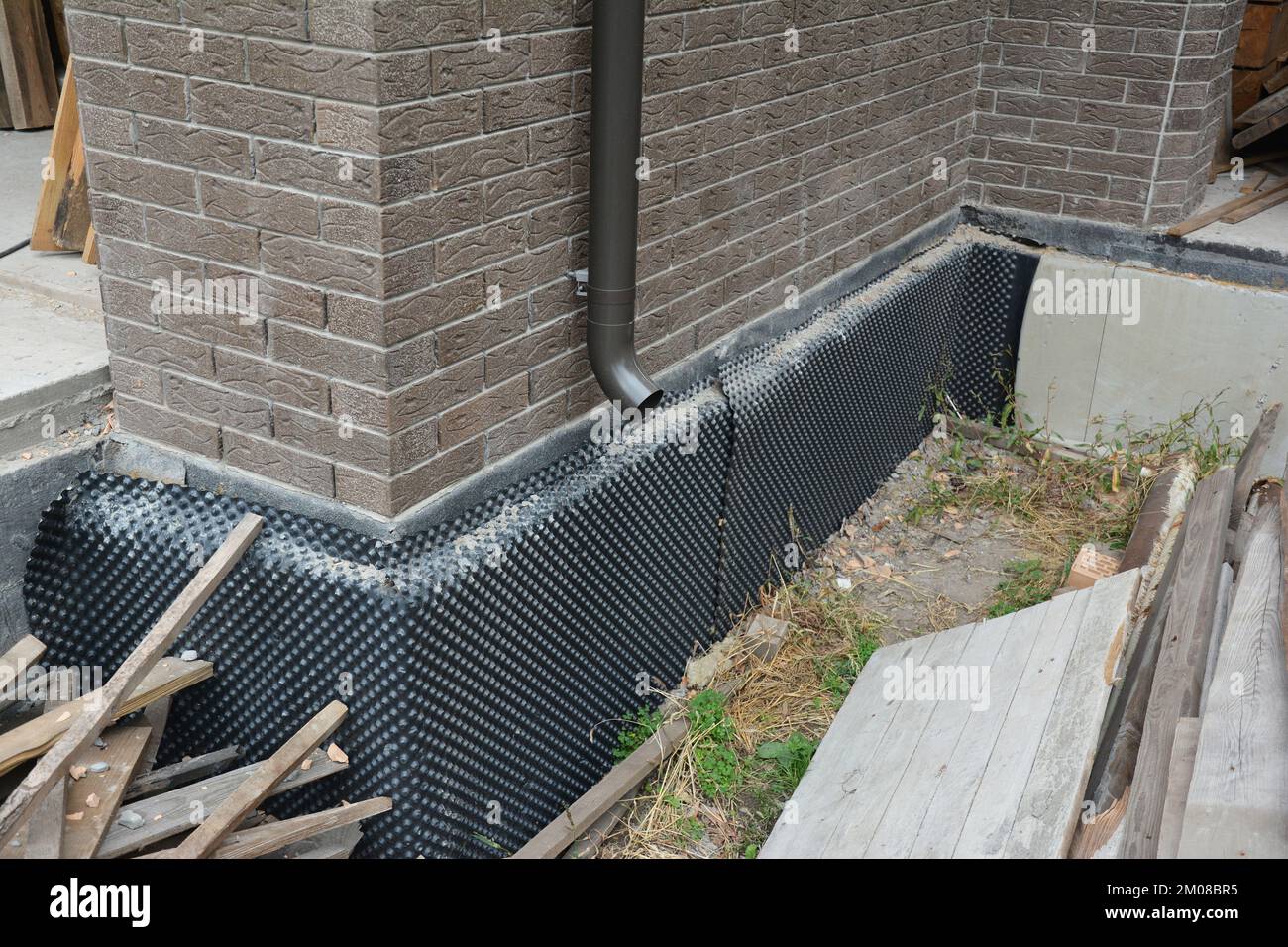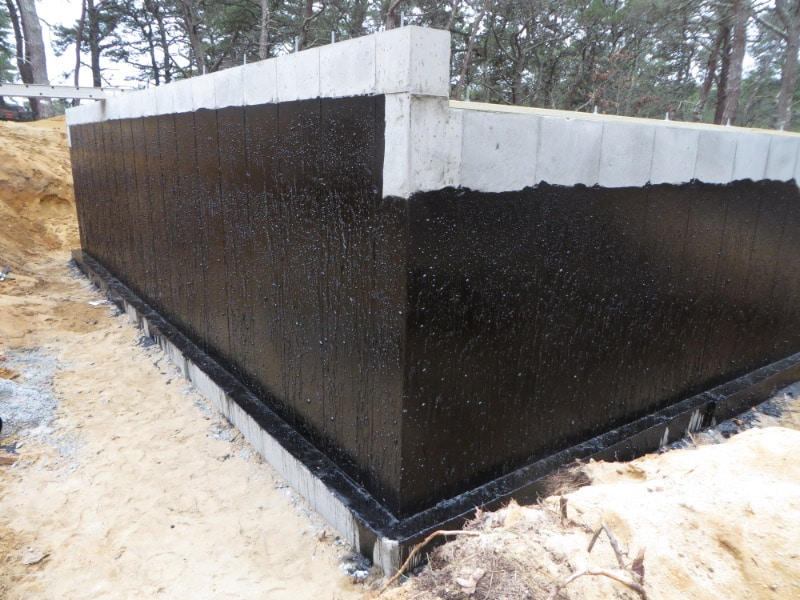What’s the difference between condensation, rising, and penetrating damp with help from damp proofing newcastle
What’s the difference between condensation, rising, and penetrating damp with help from damp proofing newcastle
Blog Article
Exploring the Different Techniques and Solutions for Effective Damp Proofing
Dampness in structures positions considerable challenges to both structural integrity and interior air top quality. Different techniques and services have emerged to combat this prevalent concern. From typical damp-proof membranes to innovative chemical therapies, each technique supplies distinct benefits. Recognizing these options is crucial for reliable moisture control. Choosing the appropriate option depends on details structure problems and demands, prompting more expedition right into the most efficient damp proofing techniques available.
Comprehending the Sources Of Dampness
Although moisture can develop from numerous sources, comprehending these causes is essential for effective remediation. Commonly, wetness originates from three primary resources: increasing damp, passing through wet, and condensation. Increasing wet occurs when groundwater travels up with porous materials, such as brick or stone, commonly as a result of a lack of an efficient obstacle (mould treatment newcastle). Permeating damp is typically triggered by exterior variables, consisting of roof covering leakages, faulty gutters, or harmed wall surfaces, allowing water to penetrate a residential property. Condensation, on the other hand, arises from excess moisture in the air, typically worsened by bad ventilation and temperature level differences, leading to water beads forming on surfaces. Determining these underlying concerns is vital, as each kind of dampness requires a tailored method for removal. Correct evaluation aids in figuring out the most efficient options, ultimately safeguarding the architectural integrity of a building and improving interior air top quality
Standard Damp-Proof Membrane Layers

Chemical Damp-Proofing Solutions
Chemical damp-proofing services use a cutting-edge method to preventing wetness breach in structures. These methods usually involve the application of fluid chemicals that pass through masonry and create an obstacle against climbing moist. Generally made use of chemicals consist of silanes, siloxanes, and various other water-repellent agents that react with surface materials to produce a hydrophobic layer.The application procedure generally needs boring openings right into the walls, injecting the chemical option, and permitting it to treat. This technique is specifically advantageous for older frameworks where traditional damp-proof membranes may be unwise. Additionally, chemical damp-proofing can be much less turbulent and extra economical than extensive restoration projects.While effective, these remedies depend on correct application and environmental problems for peak efficiency. Routine upkeep and surveillance are important to ensure the long life of the damp-proofing therapy. Generally, chemical damp-proofing represents a flexible option for protecting structures versus moisture-related damages
Cavity Wall Surface Construction Techniques
Dental caries wall building techniques supply many benefits, particularly in wetness control and energy effectiveness. By incorporating an air void in between two layers of masonry, these walls properly minimize water access while improving insulation. This combination not just secures structures from dampness however likewise contributes to reduced power intake.
Advantages of Dental Caries Wall Surfaces
When taking into consideration effective damp proofing approaches, the advantages of dental caries wall surfaces stand apart plainly. Cavity wall surfaces include two different layers, developing an air void that efficiently decreases wetness infiltration. This layout reduces the danger of moisture, as the outer wall surface functions as an obstacle versus rainfall and water access. Additionally, cavity walls enhance thermal insulation, which contributes to power performance by decreasing heat loss. They likewise give audio insulation, aiding to develop a quieter interior setting. Moreover, the air void enables ventilation, which assists in wetness control and lowers the probability of mold development. These benefits not only enhance the general convenience of a building yet likewise contribute to its longevity and structural honesty.
Dampness Control Strategies
Reliable wetness control techniques are essential in tooth cavity wall surface construction to guarantee long-term defense against wetness. One primary method entails the incorporation of weep openings, which facilitate water drainage from the tooth cavity, avoiding build-up. In addition, the usage of breathable membranes can assist take care of moisture levels while permitting caught vapor to get away. Correct placement of insulation is likewise important, as it must not block water drainage paths. Making certain that the outer leaves of the tooth cavity wall surface are constructed with water-resistant materials improves total longevity. Regular upkeep checks are vital to determine any type of clogs or damages early, securing the framework's honesty. Eventually, a combination of these techniques develops a robust defense versus moisture invasion in cavity wall surfaces.
Insulation and Power Efficiency
Insulation plays an essential duty in enhancing energy performance within tooth cavity wall construction. By including shielding products, these walls develop a thermal obstacle that decreases warmth loss and reduces energy usage. Efficient insulation not just helps preserve a steady indoor temperature yet also alleviates the threat of moisture, as it stops condensation within the wall surface cavity. Different strategies, such as making use of rigid foam boards or mineral wool, can be employed to attain excellent insulation performance. Additionally, appropriate installment is necessary to assure that voids and gaps are lessened, which can otherwise compromise power effectiveness. Ultimately, a well-insulated cavity wall adds substantially to total sustainability and lowers heating and cooling prices for home owners.
Exterior Damp Proofing Methods
External moist proofing techniques are vital for shielding frameworks from wetness seepage. 2 effective techniques consist of the application of water-proof membrane layers and the installation of French drains pipes. These remedies assist mitigate water accumulation and protect the stability of buildings.
Waterproof Membrane Application
While different methods exist for avoiding moisture access, the application of water resistant membrane layers stays a highly effective outside moist proofing method. These membranes are normally made from materials such as polyethylene, rubber, or modified bitumen, giving a durable obstacle against water infiltration. The installation procedure includes using the membrane layer to the external surface areas of walls or foundations, making sure total insurance coverage to avoid leakages. Appropriate attachment and securing at joints are vital to making best use of performance. Water resistant membranes can be applied in numerous types, including fluid layers and sheet membrane layers, enabling for versatility based on the particular requirements of the framework. This technique not just secures buildings from wetness yet likewise improves their durability and architectural honesty.
French Drain Installment
One efficient method for handling groundwater and stopping wetness build-up around a structure's foundation is the installment of a French drainpipe. This drainage system contains a trench full check here of crushed rock and a perforated pipe that redirects surface water far from the foundation. Correct installment needs cautious planning, making sure that the drainpipe slopes away from the framework to promote perfect water flow. Furthermore, the location of the drainpipe is vital; it must be placed in locations susceptible to pooling or excess moisture. Routine maintenance, consisting of clearing up debris from the crushed rock and making certain the pipe remains unhampered, is vital for lasting efficiency. Inevitably, a well-installed French drainpipe can greatly decrease the danger of water-related issues in basements and structures.
Inside Waterproofing Strategies
Interior waterproofing approaches are vital for shielding a structure's inside from dampness infiltration and potential water damages. These approaches usually include the application of specialized products and methods designed to produce a moisture barrier within the structure. One common technique is making use of water resistant finishings or sealers on wall surfaces and floorings, which prevent dampness from passing through surfaces.Additionally, installing interior water drainage systems, such as sump pumps, can successfully take care of water build-up in cellars and crawl areas. One more approach involves using vapor barriers, which are set up to hinder wetness movement from the ground right into living spaces.Moreover, dealing with any cracks or spaces in walls or foundations with ideal sealants assures an extensive protection against water intrusion. By executing these interior waterproofing methods, homeowner can significantly lower the risk of mold development, architectural damages, and various other moisture-related issues. Proper implementation of these strategies is essential for long-lasting defense and building stability.
Regular Upkeep and Inspection Practices
Regular maintenance and assessment practices are crucial for guaranteeing the long-term efficiency of wet proofing options in any building. Regular checks allow homeowner to identify early indicators of moisture breach, such as peeling paint, mold growth, and mildewy smells. These signs can signify underlying issues that need instant attention.Inspections must be conducted at least yearly, focusing on susceptible areas like basements, crawl areas, and outside walls. Throughout these evaluations, homeowner must check out sealers, drainage systems, and ventilation to validate they work correctly.Additionally, maintaining rain gutters and downspouts is essential, as stopped up systems can cause water buildup near the foundation. Implementing a normal upkeep routine, together with prompt repairs, can considerably prolong the life-span of wet proofing procedures and shield the architectural integrity of the structure. Proactive steps ultimately add to the total health and wellness of the living atmosphere.
Often Asked Inquiries
For How Long Does Damp Proofing Commonly Last?
The period of moist proofing performance differs, generally lasting in between 20 to 50 years. Elements such as application top quality, environmental conditions, and maintenance techniques substantially influence the longevity of the damp proofing treatment.

Can I Damp Proof My Home Myself?
The individual contemplated the feasibility of do it yourself damp proofing. With proper research study and the ideal products, it is possible. They additionally identified the importance of professional support to ensure durable performance and protect against future issues.
What Are the Indicators of Inefficient Damp Proofing?
Indicators of ineffective damp proofing consist of relentless stuffy odors, visible mold growth, peeling paint, wet patches on wall surfaces, and timber decay - mould treatment newcastle. Homeowners should deal with these concerns promptly to protect against more damage and health concerns
Does Damp Proofing Affect Indoor Air Quality?

How Much Does Specialist Damp Proofing Price?
Expert damp proofing costs differ significantly, generally varying from $1,000 to $5,000 depending on the residential or commercial property's dimension, the level of the wet problem, and picked techniques. Each scenario requires a customized analysis for precise rates. Commonly, dampness stems from 3 key sources: increasing moist, permeating moist, and condensation. When thinking about efficient moist proofing methods, the advantages of dental caries wall surfaces stand out prominently. External damp proofing techniques are crucial for protecting structures from wetness seepage. While numerous approaches exist for avoiding wetness access, the application of water-proof membranes remains a highly reliable external damp proofing method. Signs of ineffective moist proofing consist of persistent mildewy odors, visible mold and mildew development, peeling paint, wet patches on walls, and wood degeneration.
Report this page